
News |
- Land Changes Across North America - New Atlas
- Canada Ranks Last In World On Environment
- The Human Face of Energy East Pipeline
- World Water Day 2014
- EU Parliament Calls for High Arctic Sanctuary
- The Great Green Wall Initiative
- Ontario Bear Hunt May Reopen
- New Ozone-Destroying Gases Discovered
- Canadian Natural Resources Faces 11 Charges
- DFO Minister Ignored Own Scientists: Canada's Court Ruling
- Ban Fracking In Canada: Save Our Water
- UN Report - We Are Not Ready For Climate Change
| Land Changes Across North America - New Atlas | 28 March 14 |
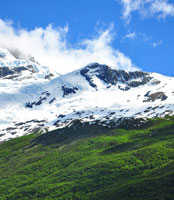
The maps featured in the CEC's North American Environmental Atlas depicts land cover changes in North America's forests, prairies, deserts and cities, using satellite images from 2005 and 2010. These changes can be attributed to forest fires, insect infestation, urban sprawl and other natural or human-caused events. Produced by the North American Land Change Monitoring System (NALCMS), a trinational collaborative effort through by the CEC, these maps and accompanying data can be used to address issues such as climate change, carbon sequestration, biodiversity loss, and changes in ecosystem structure and function. View March 11, 2014 Commission for Environmental Cooperation articleView October 2013 American Meteorological Society report View Commission for Environmental Cooperation website View National Resources Canada Characterization and Monitoring Change of Canada's Land Surface View U.S. Geological Survey North American Land Change Monitoring System page |
|
 Print version Print version |
Top |
| Canada Ranks Last In World On Environment | 21 March 14 |

Canada "has the dubious honor of being the only CDI country with an environment score which has gone down since we first calculated the CDI [in 2003]," the report said. "This reflects rising fossil fuel production and its withdrawal from the Kyoto Protocol, the world's only treaty governing the emissions of heat-trapping gasses. Canada has dropped below the U.S. into bottom place on the environment component." Canada dropped from 12th place last year and did far worse in the environmental protection category, where it ranked 27th. Every other country made progress in this area except Canada, the centre said in a report on the rankings. View November 23, 2013 Media.K-Net articleView November 18, 2013 The Globe and Mail article View November 18, 2013 The Globe and Mail article View November 18, 2013 Huffington Post article View November 12, 2013 International Energy Agency report View Center for Global Development Commitment to Development Index 2013 page |
|
 Print version Print version |
Top |
| The Human Face of Energy East Pipeline | 21 March 14 |

"There is an opportunity to tell the personal story about how people along the line feel," van Waarden says about his motivation to capture stories from a cross section of Canadians stretching from "the fisherman on Grand Manan Island to the farmer in Saskatchewan." Energy East is a massive project proposed by TransCanada Corp. to bring 1.1 million barrels a day of western oil to eastern markets along a 4,600-kilometre pipeline. It involves converting a 40 year old existing gas pipeline, the development of 72 new pumping stations along the route and new pipelines to connect oil sands in Alberta to Quebec City and then on to St. John, N.B. "The oil sands are already Canada's fastest-growing source of carbon pollution and the Energy East pipeline would help to accelerate production. Any regulatory review should include not only the impact of the pipeline itself, but also the impact of producing the crude that would flow through it." (Clare Demerse, Federal Policy Director, Pembina Institute) View March 19, 2014 DeSmog Canada articleView February 6, 2014 Pembina Institute media release View August 7, 2013 DeSmog Canada article View Along the Pipeline Indiegogo page |
|
 Print version Print version |
Top |
| World Water Day 2014 | 21 March 14 |

The theme for the United Nations World Water Day 2014 is water and energy – a theme that hits home for Manitobans. The upcoming public hearings about regulation of Lake Winnipeg, and the current and expanding hydroelectric infrastructure on the Nelson River in northern Manitoba, are examples of developments that affect Manitoba's vast freshwater system. Manitobans have the responsibility, as the lucky stewards of this immense watershed, to educate themselves about risks to their waters, to voice their concerns to regulatory and governmental bodies, and to bring about positive change for the future. View United Nations Water World Water Day 2014 pageView Walter & Duncan Gordon Foundation Cold Amazon: The Mackenzie River Basin page View The Council of Canadians World Water Day page View United Nations' World Water Day YouTube Channel Source:
United Nations Water
|
|
 Print version Print version |
Top |
| EU Parliament Calls for High Arctic Sanctuary | 21 March 14 |

International regulatory protection of the high Arctic would result in preservation of innumerable species of fish, marine mammals, and threatened Arctic iconic species such as polar bears and barren ground caribou. Establishing appropriate regulatory mechanisms to control environmental degradation caused by fishing fleets, mining and oil companies would be necessary under the European Union Arctic Strategy. To properly implement such a groundbreaking strategy, all countries sharing Arctic territory must agree to commit – something that has yet to happen. "As the European Union sets an impressive precedent for Arctic protection, Canada continues to push forward its pro-business and pro-oil agenda as chair of the Arctic Council," said Greenpeace Canada spokesperson Farrah Khan in a March 12 news release. "To successfully prevent devastating oil spills and the depletion of fish stocks that could destroy the livelihoods of millions, measures such as those proposed by the European Parliament need to be reflected in Canadian law as well as the laws of all Arctic states." View March 14, 2014 The Maritime Executive articleView March 13, 2014 Nunatsiaq Online article View March 12, 2014 Greenpeace article Source:
Nunatsiaq Online
|
|
 Print version Print version |
Top |
| The Great Green Wall Initiative | 21 March 14 |
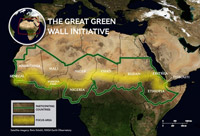
Source: Global Environment Facility
A joint effort to reverse food insecurity, over farming and overgrazing is underway, and attempts to mitigate the effects of climate change and extreme weather are in the making. The effects of land degradation are most severe in Sub-Saharan Africa, where roughly 500 million people are trying to make a living from land subjected to increasing desertification – a process where extreme nutrient loss in soil results in a desert-like wasteland. Jean-Marc Sinnassamy, senior environmental specialist with the Global Environment Facility (GEF), looks at this union of countries as a unique opportunity to unite governments on a strong political base. Sinnassamy stated, "Here, we saw political leaders, heads of state, ministers in different countries wanting to work on common environmental issues and wanting to tackle land degradation issues together." View Global Environment Facility The Great Green Wall pageView Wikipedia Great Green Wall page View November 4, 2013 National Geographic article View December 16, 2013 Food and Agriculture Organization of the United Nations article Source:
Global Environment Facility
|
|
 Print version Print version |
Top |
| Ontario Bear Hunt May Reopen | 14 March 14 |

However, over the last 15 years, the increase in the number of 'nuisance' bear sightings has brought this issue back. A trap and relocate program initiated by the Ontario government to deal with problem bears coming into contact with humans had a 70% success rate, however this program ended in 2012. The spring hunt is proposed as being a financially beneficial solution to the 'nuisance' bear problem. Scientific studies argue reopening the hunt will not make any substantial difference in preventing bears from approaching human. The government of Manitoba allows both spring and fall season to be open to black bear hunting, with a limit of one adult bear per person per year. Female bears with cubs cannot be killed at any time of the year. View March 7, 2014 Toronto Star articleView February 25, 2014 The Globe and Mail article View November 14, 2013 CBC News article View Manitoba Government Black Bear Hunting page Sign Ontario Minister of Natural Resources: Do Not Re-Institute the Spring Bear Hunt petition Source:
Toronto Star
|
|
 Print version Print version |
Top |
| New Ozone-Destroying Gases Discovered | 14 March 14 |
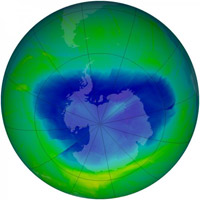
Source: Common Dreams
"The three CFCs are being destroyed very slowly in the atmosphere – so even if emissions were to stop immediately, they will still be around for many decades to come", stated lead author Dr. Johannes Laube from UEA's School of Environmental Sciences. Studies lead the scientists to predict that roughly 74,000 tonnes of all four chemicals combined were released before 2012 and were not present in the atmosphere before the 1960's. This leads to the assumption the chemicals are manmade. The sources of the chemicals have not yet been identified. "We don't know where the new gases are being emitted from and this should be investigated. Possible sources include feedstock chemicals for insecticide production and solvents for cleaning electronic components." said Dr. Laube. View March 10, 2014 Common Dreams articleView March 10, 2014 The Economic Times article View March 10, 2014 Discovery News article View March 9, 2014 Reuters article Source:
Common Dreams
|
|
 Print version Print version |
Top |
| Canadian Natural Resources Faces 11 Charges | 14 March 14 |

Charges the company faces include: Combustion at the flare stack; release of an unapproved substance; release of a substance causing a significant adverse effect; failure to report approval contraventions; and failing to report to and providing misleading information to the director and the Fort McKay First Nation. Although there was no indication of how much gas released, a news release by the Alberta government stated that the gas release was picked up by air-monitoring equipment and confirmed through complaints from Fort McMurray residents. With a smell akin to rotten eggs, hydrogen sulphide at low concentrations can cause dizziness, headaches, irritated respiratory pathways and nausea. Higher concentrations, however, cause sleepiness, blurred vision or death from respiratory failure. Zoe Addington, Canadian Natural Resources spokeswoman, stated via email, "Canadian Natural takes theses charges very seriously. Because of legal proceeding, we are not commenting at this time." View March 10, 2014 Stockhouse articleView March 7, 2014 The Calgary Herald article View March 7, 2014 Global News article View September 27, 2013 Global News article Source:
The Calgary Herald
|
|
 Print version Print version |
Top |
| DFO Minister Ignored Own Scientists: Canada's Court Ruling | 14 March 14 |
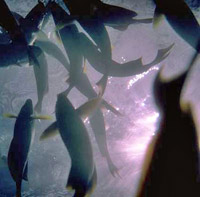
The Nuu-chah-nulth First Nations, whose herring-roe fishery has been closed since 2006, went to court last month seeking the injunction. The ruling has prompted the Haida First Nation to threaten similar court action. The First Nations say the fisheries should not be opened because they have not recovered enough to allow safe harvesting. The decision came after an internal memo revealed Fisheries Minister Gail Shea overruled recommendations of scientists in her own department. The DFO memo revealed that department experts had recommended maintaining the herring fisheries closure for the 2014 season, and that Shea had nonetheless recommended opening the fishery in three disputed areas. The memorandum to the minister, written by the federal herring co-ordinator in Vancouver, and signed by David Bevan, the DFO associate deputy minister, was based on recommendations of scientists and B.C. herring managers. View March 14, 2014 The First Perspective articleView March 9, 2014 The Globe and Mail article View February 26, 2014 The Tyee article View February 22, 2014 article |
|
 Print version Print version |
Top |
| Ban Fracking In Canada: Save Our Water | 14 March 14 |
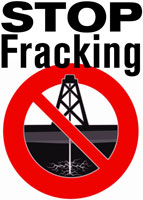
Millions of litres of water are extracted every day from community watersheds across Canada to fuel this booming industry. There is currently no federal oversight to keep the industry in check, or to protect the health of people and our drinking water. The recent report, "Hydraulic Fracturing and Water Stress", shows the severity of the problem. Alberta and B.C. are among eight North American regions examined in the study by Ceres, a U.S.-based nonprofit advocating for sustainability leadership. One of the most disturbing findings is that hydraulic fracturing, or fracking, is using enormous amounts of water in areas that are short on water. The report notes close to half the oil and gas wells recently fracked in the U.S. "are in regions with high or extremely high water stress" and more than 55 per cent are in areas experiencing drought. Fracking is all about the short term profit and offers no comfort for the future borrowed from the coming generations. It is time to ban fracking in Canada. Sign the Petition here: Demand a Ban on Fracking in Canada View February 19, 2014 The Huffington Post articleView February 1, 2014 The New York Times article View February 2014 Ceres report View Lists of Fracking Bans Worldwide View New Brunswick Anti-Shale Gas Alliance website |
|
 Print version Print version |
Top |
| UN Report - We Are Not Ready For Climate Change | 7 March 14 |
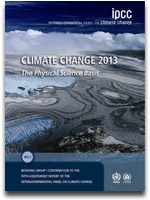
The draft report came after a five-day meeting in Japan and is the second volume in a long-awaited trilogy by the IPCC in its first overview of the causes and effects of global warming, and options for dealing with it, since 2007. In the first volume of the three-part review, the IPCC said it was more certain than ever that humans were the cause of global warming and predicted temperatures would rise another 0.3 to 4.8 degrees Celsius (0.5-8.6 degrees Fahrenheit) this century. Ian Bruce, science and policy manager at the David Suzuki Foundation in Vancouver, said it is clear that Canada is more vulnerable to some of the effects of climate change, and that global warming is amplified at the north and south poles. That's the bad news, he said. "The good news is that the report shows that our future will not be determined by chance but (by) choices we make," said Bruce. "So we have a choice to reduce carbon emissions. The report says it is still possible that we can escape the worst impacts of climate change if we make some important changes." View March 7, 2014 The Guardian articleView February 28, 2014 Common Dreams article View December 16, 2013 Sightline Daily article View October 3, 2013 David Suzuki Foundation article View September 30, 2013 Toronto Star article View 2013 IPCC Fifth Assessment Report Visit Intergovernmental Panel On Climate Change website |
|
 Print version Print version |
Top |


 RSS Feeds:
RSS Feeds: